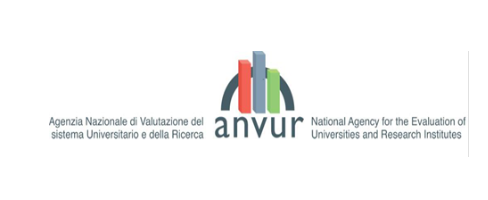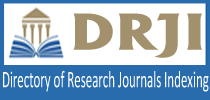PATERNITY LEAVE: FIRST RESULTS OF INTRODUCTION IN MOLDOVA
DOI:
https://doi.org/10.36004/nier.es.2022.2-06Keywords:
paternity leave, paternity allowance, family policyAbstract
Parental leave policies are important instruments regulating how the men’s and women’s concurrent role as parents and employees is valued and encouraged. Although paternity leave in Moldova was introduced in 2016, the share of fathers who benefit from this leave remains low.
The article presents the results of the qualitative sociological study conducted in 2022 with fathers who took paternity leave and fathers who did not take it. The aim of the research was to determine the barriers faced by fathers in taking paternity leave.
The benefits of paternity leave for both fathers and the whole family were found: formatting strong emotional bonds between father and child, developing newborn care skills, strengthening confidence in their ability to care for children, improving family relations. In the implementation of this leave, fathers face social, professional, financial and cultural difficulties. Traditional stereotypes of behavior and ideas that a woman (mother) should take care of a child have a negative impact on the position of men (fathers) about the possibility of using parental leave. The level of education and the position on the labor market are determining factors in the use of paternity leave. Respondents who took paternity leave have higher education, stable occupational position and relatively high incomes; and those who did not take this leave have secondary education, unstable occupational position, and low incomes. Most of the fathers who used parental leave had the first child in the family, and those who did not use it had a second or third child. The study found that some employers do not encourage their employees to take paternity leave. Often this is due to a shortage of workers in the organization / enterprise, and is also more typical for the private sector.
Downloads
References
Belle, J. (2016). Paternity and parental leave policies across the European Union. https://doi.org/10.7249/RR1666
Bettelli, M. F. (2020). The impact of paternity leave mandates on women's employment in the OECD countries. Buenos Aires. https://repositorio.udesa.edu.ar/jspui/handle/10908/18499
Cabrera, N. J., Fagan, J., Farrie, D. (2008). Explaining the long reach of fathers’ prenatal involvement on later paternal engagement. Journal of Marriage and Family, 70(5), 1094–1107. https://doi.org/10.1111/j.1741-3737.2008.00551.x
Canaan, S., Lassen, A. S., Rosenbaum, P., Steingrimsdottir, H. (2022). Maternity Leave and Paternity Leave: Evidence on the Economic Impact of Legislative Changes in High Income Countries. Institute of Labor Economics. https://www.iza.org/de/publications/dp/15129/maternity-leave-and-paternity-leave-evidence-on-the-economic-impact-of-legislative-chances-in-high-income-countries
Chistruga-Sînchevici, I. (2021). Echilibrul dintre muncă și viața de familie: necesități ale părinților și rolul politicilor sociale. Chișinău, INCE. https://doi.org/10.36004/nier.2022.978-9975-89-251-3
Cools, S., Fiva, J. H., Kirkebøen L. J. (2011). Causal effects of paternity leave on children and parents. Scandinavian Journal of Economics, 117(3), 801-828. https://www.jon.fiva.no/docs/CoolsFivaKirkeboen.pdf, https://doi.org/10.1111/sjoe.12113
Farré, L., González L. (2019). Does Paternity Leave Reduce Fertility? Journal of Public Economics, 172(1), 52-66. https://doi.org/10.1016/j.jpubeco.2018.12.002
Hart, R. K., Andersen, S. N., Drange, N. (2022). Effects of extended paternity leave on family dynamics. Journal of Marriage and Family, 84(3), 814-839. https://doi.org/10.1111/jomf.12818
House of Commons Women and Equalities Committee. (2018, June 14). Fathers and thework place: Government Response to the Committee’s First Report of Session 2017-19. Third Special Report of Session 2017-19. House of Commons. https://publications.parliament.uk/pa/cm201719/cmselect/cmwomeq/1076/1076.pdf
Lamb, M. E., Pleck, J. H., Charnov, E. L., Levine, J. A. (1985). Paternal behavior in humans. American Zoologist, 25(3), 883-894. https://doi.org/10.1093/icb/25.3.883
Mansdottera, A., Fredlunda, P., Hallqvistb, J., Magnussona, C. (2010). Who takes paternity leave? A cohort study on prior social and health characteristics among fathers in Stockholm. Journal of Public Health Policy, 31(3), 324-341. https://doi.org/10.1057/jphp.2010.24
Marshall, K., Rieck, E. (2012, June). Does child care affect parents’ sickness absence? Evidence from a Norwegian paternity leave reform. Working Papers in Economics, 14/12, 1-42. https://ekstern.filer.uib.no/svf/2012/WP14.12.pdfn ,
Morgan, D.H.J. (1985) The family, politics and social theory. London: Routledge and Kegan Paul. 320 pp. International Social Work, 29(3), 273–274. https://doi.org/10.1177/002087288602900313
Nepomnyaschy L., Waldfogel J. (2007). Paternity leave and fathers' involvement with their young children: Evidence from the American ECLS-B. Community, Work and Family, 10(4), 427-453. https://doi.org/10.1080/13668800701575077
Olafsson, A., Steingrimsdottir, H. (2020). How Does Daddy at Home Affect Marital Stability? Economic Journal, 130(629), 1471-1500. https://doi.org/10.1093/ej/ueaa009
Petts, R. J. (2018). Paternity Leave, Father Involvement, and Parental Conflict: The Moderating Role of Religious Participation. Religions, 9(10), 289. https://doi.org/10.3390/rel9100289
Petts, R. J., Knoester, C. (2018). Paternity Leave-Taking and Father Engagement. Journal of Marriage and Family, 80(5), 1144-1162. https://doi.org/10.1111/jomf.12494
Petts, R. J., Knoester, C., & Waldfogel, J. (2020, February). Fathers’ Paternity Leave-Taking and Children’s Perceptions of Father-Child Relationships in the United States. Sex Roles, 82, 3-4, 173-188. https://doi.org/10.1007/s11199-019-01050-y
Redshaw, M., & Henderson, J. (2013, March 20). Fathers’ engagement in pregnancy and childbirth: evidence from a national survey. BMC Pregnancy and Childbirth, 13, 70. https://doi.org/10.1186/1471-2393-13-70
Rege, M., Solli I. F. (2010). The Impact of Paternity Leave on Long-term Father Involvement. CESifo. Working Paper, no. 3130, 1-46. https://www.econstor.eu/handle/10419/38968
Rehel, E. M. (2014, September 26). When Dad Stays Home Too: Paternity Leave, Gender, and Parenting. Gender and Society, 28, 1. https://doi.org/10.1177/0891243213503900
Wray, D. (2020). Paternity Leave and Fathers’ Responsibility: Evidence From a Natural Experiment in Canada. Journal of Marriage and Family, 82(2), 534-549. https://doi.org/10.1111/jomf.12661
Yeung, W., Nanxun, L. (2021). Paternity Leave, Family Dynamics, and Children’s Behavior in Singapore. Journal of Marriage and Family, 1-23. https://doi.org/10.1111/jomf.12896
Zhang, H. (2020, May 20). The Effect of Paternity Leave Policies on the Gender Gap in Labor Participation. https://mmss.wcas.northwestern.edu/thesis/articles/get/1054/zhanghuiran_83355_9063471_Zhang.Huiran.Thesis.2020.pdf















